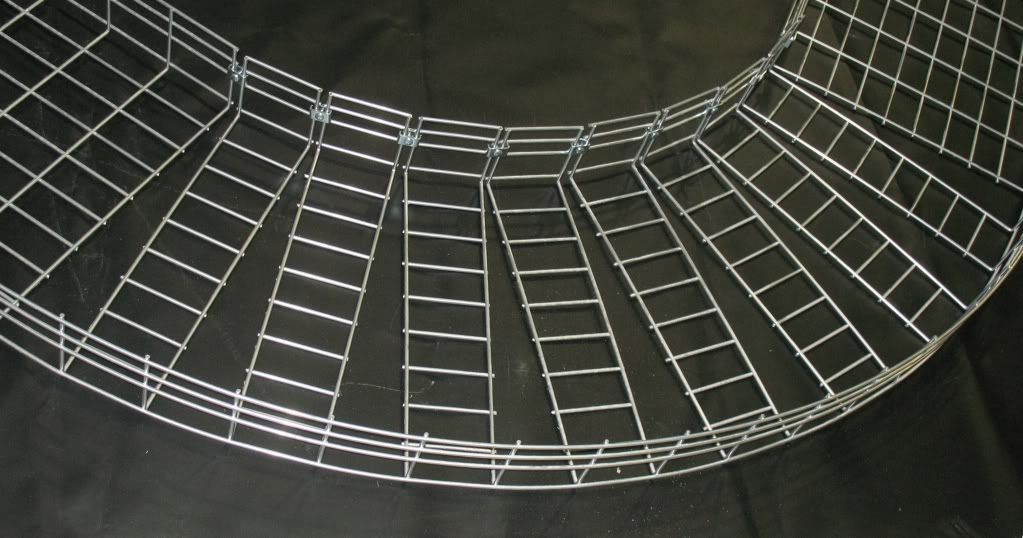Since wire mesh basket tray first came to the US in the mid-90's, the standard practice for installing has been this:

Followed by this:

The installer starts with a straight 10' stick of tray then cuts it with bolt cutters then bends it into desired shape then uses bolts to hold it together for hanging.
In most cases, these are UL Classified parts and the UL label is specific as to the "cross-sectional area" of the tray (from 2008 NEC 392.7(B)) for use as an Equipment Grounding Conductor. After the field modifications, however, the cross sectional area is drastically reduced (in the case of the photos above reduced to .11 square inches although the label says a minimum of .20 square inches).
Most AHJ's I have spoken with on the subject say it is definitely a Code violation, but hasn't been enforced.
Additional potential violations:
1. Sharp edges - NEC 392.5(B)
2. Corrosion Protection (where cut) - NEC 392.5(C)
3. Rigidity (this flexes like flex conduit) - NEC 392.5(A)
4. Side Rails (cut and patched?) - NEC 392.5(D)
5. Fittings (is this a "fitting"?) - NEC 392.5(E)
Again, I haven't seen enforcement on this despite the fact that most AHJ's confirm it's a violation. I see this practice in virtually every commercial or industrial building and ALL new construction.
Considering the importance of cable tray systems, especially as Equipment Grounding Conductors, why do you think there is so little enforcement?

Followed by this:

The installer starts with a straight 10' stick of tray then cuts it with bolt cutters then bends it into desired shape then uses bolts to hold it together for hanging.
In most cases, these are UL Classified parts and the UL label is specific as to the "cross-sectional area" of the tray (from 2008 NEC 392.7(B)) for use as an Equipment Grounding Conductor. After the field modifications, however, the cross sectional area is drastically reduced (in the case of the photos above reduced to .11 square inches although the label says a minimum of .20 square inches).
Most AHJ's I have spoken with on the subject say it is definitely a Code violation, but hasn't been enforced.
Additional potential violations:
1. Sharp edges - NEC 392.5(B)
2. Corrosion Protection (where cut) - NEC 392.5(C)
3. Rigidity (this flexes like flex conduit) - NEC 392.5(A)
4. Side Rails (cut and patched?) - NEC 392.5(D)
5. Fittings (is this a "fitting"?) - NEC 392.5(E)
Again, I haven't seen enforcement on this despite the fact that most AHJ's confirm it's a violation. I see this practice in virtually every commercial or industrial building and ALL new construction.
Considering the importance of cable tray systems, especially as Equipment Grounding Conductors, why do you think there is so little enforcement?


